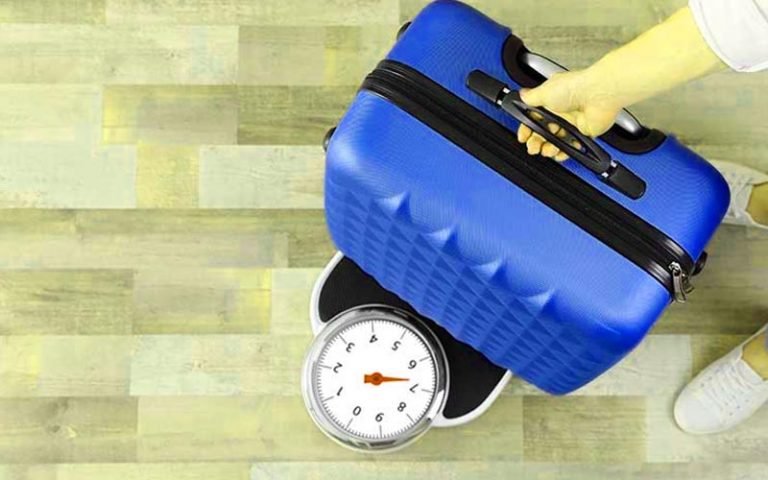why is there a luggage weight limit?
When we think of the history of commercial aviation, we tend to think of the invention of powered flight.
Over a hundred people in the audience assumed that this would be a way for airlines to make more money, so they decided to introduce luggage weight checks.
Yes, this may be the primary reason.
Some airlines seem to care less about the weight of passengers and the weight of their carry-on luggage.
It doesn’t matter how much weight different passengers are, and the airline feels more concerned about the size of its plane than how much weight the passengers are.
If a passenger weighs 50kg more than her daughter, they both pay the same money for tickets.
Many people are still in the dark about the introduction of luggage weight checks on commercial flights.
The Airbus A320 can accommodate about 36.5t of load, and the airplane bear load of 78t efficiently, which means that it can easily accommodate passengers and their luggage.
If the aircraft can hold this much weight baggage, why does it cost more to take the extra luggage? There are three primary reasons why the luggage weight limit was introduced:
Table of Content
Luggage handlers needs to carry the weight

One of the reasons union labor laws limits the amount of weight a baggage handler can carry is to lift it safely.
There’s a simple solution to make loading an airplane faster: just let one person easily carry the suitcase and save the trouble for the other person.
To keep the plane balance.
Luggage has led to several fatal air crashes. Because of luggage and luggage management issues, some passengers have died in these deadly crashes.
On March 12, 1950, an Avro 689 Tudor V, transporting rugby fans from Dublin, crashed a few meters from Llandow Airport.
According to reports, the aircraft had its undercarriage lowered, and the plane seemed to pitch up as it approached the runaway, but it then plunged abruptly to the ground.
The investigation is done, and it is believed that the aircraft was loaded with the limit load, which it was certified for.
To ease the takeoff of airplanes
If an airplane is too heavy, it may not be able to take off safely and may not fly properly if it encounters an engine failure.
Though obese, the plane can still lift off the ground but would not fly for long due to being overweight.
Many types of luggage weighing over a ton, and they usually make planes overweight. These are generally not centered within airplanes’ safe center of gravity, which drags the center of gravity of planes beyond their aft or forward limits.
The plane loses control, crashes, and all aboard are killed.
For some aircraft types, the MTOW is defined by the manufacturer, but for others, like passenger airplanes, the MTOW is determined by the
It is the maximum weight an airplane can take off from the ground and remain suspended in the air.
However, the weight of the plane is restricted by the maximum takeoff weight, which is the maximum weight the airplane can carry without going beyond the air.
One of the reasons that the luggage weight limit is enforced is to ensure that the aircraft does not lose control after taking off.
To reduce the rate at which fuel is burnt.

The airport staff checks the weight of every piece of luggage because they are aware that fuel consumption goes up if the importance of every baggage that the passenger is carrying is not restricted.
The plane rises into the air because the force of the wind can overcome the drag force exerted by the wings.
An airplane must have the thrust force to offset the power of air resistance. The weight of the plane should also be taken into consideration. If the amount of weight in a plane is increased, the lift must also increase.
For this, the plane has to move faster. This is where the effect of overweight luggage comes into play. Since more force is required to keep an aircraft moving at a constant speed with extra weight added to it, a higher amount of fuel is used to move the plane.
Suppose more fuel is consumed during the journey. It will cause the engine to stop and even stop the trip because only the energy needed for the journey from the start to the destination is loaded into the machine to avoid over-weighting the vehicle.
The total amount of fuel and oil required to propel the aircraft is dependent on where the airplane is flying and how much energy and fat it will be carrying.
There are two ways to calculate the total fuel required for an airport diversion: the first is to determine the energy needed to fly from the initial airport to the airport as mapped on the flight’s initial plan (this is the fuel that was consumed by the airplane during the holding period).
To generate more income for airline industries
The airline industry has added why the baggage weight limit is now introduced in recent years. Airlines are facing the challenge of preventing overweight and avoiding the overloading of planes.
Baggage weight checking has been a welcome development for airlines as it has enabled them to meet the ever-rising prices of fuel.
Airlines are introducing new charges on carry-on baggage to keep prices low and affordable for passengers.
In the airline industry, the new policy aims at encouraging passengers to purchase lightweight carry-on bags, which in turn reduces the amount of fuel required for each flight.
American Airlines announced in May 2008 that it was increasing checked bag fees. In 2017, the 23 largest US airlines earned $4.6 billion in baggage fees.
This has boosted the country’s aviation ministry, and the amount of money they have saved has helped the economy.
Read More: Best checked luggage 2024-2025

